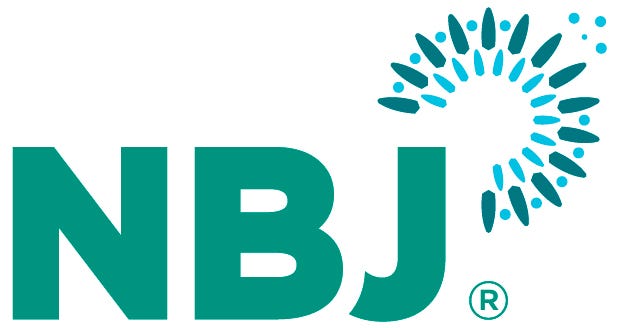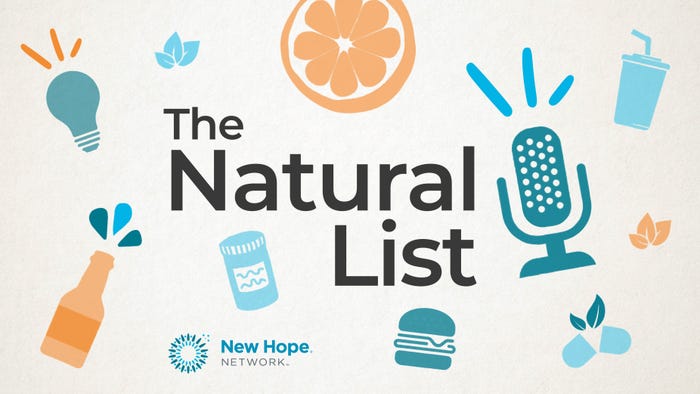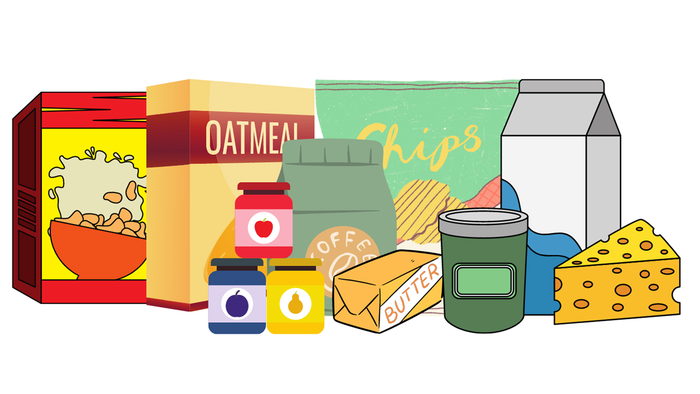January 28, 2021

Editor's note: This article was featured in the Nutrition Business Journal's Guest Editor Issue and was edited by Karen Howard of the Organic and Natural Health Association
Meatless Impossible Burgers that “bleed” just like the real deal. Creamy dairy-free ice cream made with Perfect Day’s nonanimal whey protein. Dietary supplements containing “nature-identical” astaxanthin, resveratrol or collagen made from fermented yeast, bacteria or other microorganisms.
These and many other tech-spawned products have flooded the market in recent years, even penetrating the natural products industry. They are often touted as the next frontier of food and supplements, positioned as perfectly safe and more environmentally responsible than their counterparts made the old-fashioned way. Now, new testing technology that quickly tags ingredients that were touted as “nature identical” could force the natural product industry to declare a position.
But what the companies pushing these products often don’t disclose—at least not in clear language—is that they are made with synthetic biology, synbio for short, or genetic engineering 2.0. Synbio involves using CRISPR and other gene-editing tools to reengineer microorganisms to generate products through fermentation that they’d never produce naturally. Prime example: heme, the blood dripping from those Impossible Burgers.
“Ultimately, synbio is an attempt to re-create something that occurs in nature by using microorganisms to act as mini-factories,” explains Dana Perls, food and technology program manager at Friends of the Earth. “The problem is we don’t understand enough about how nature works to do it in a way that we can be sure is safe for human health and the environment and sustainable for small farmers.”
Despite biotech and agribusiness’s insistence that synbio is safe and eco-friendly, nobody knows for sure whether that’s true. Unlike first-generation GMOs—primarily plants modified with DNA from another species—this new form of gene editing is totally unregulated. USDA and FDA limit their oversight of genetically engineered products to those containing foreign DNA, which synbio ingredients typically do not have. Thus, the DARK Act of 2018, which mandates labeling of “bioengineered” foods, is of little use.
“New biotech companies are trying to pull the wool over FDA and USDA by claiming to be making ‘nature-identical’ products,” Perls says. “But these products are not natural and are far from identical—they are genetically engineered.”
Yet, unencumbered by regulations and buoyed by billions in VC funding, synbio has proliferated unchecked. It has quickly become omnipresent in food and beverage and is increasingly sneaking into dietary supplement supply chains.
According to Hans Eisenbeis, director of marketing and communications for the Non-GMO Project, synbio products already commercialized or in development include vanillin and other flavorings, several colorants, CBD, collagen, plant-based proteins, dairy proteins, vitamins, omegas, probiotics and dairy milk proteins. John Fagan, Ph.D., chairman and chief scientist at Health Research Institute–HRI Labs, adds astaxanthin, resveratrol and squalene to the growing list.
Consumers, the vast majority of whom want GMOs labeled, remain mostly in the dark about synbio. Many food and dietary supplement manufacturers are also unaware of the true identity of ingredients they’re purchasing.
This lack of transparency around synbio—as well as biotech’s seeming lack of ethical considerations and disregard for potential environmental, economic and social ramifications—has spurred opponents into action. A growing coalition of scientists, technology-monitoring organizations and natural products industry stakeholders are working hard to spread the truth about synbio, hoping to convince industry to call it out as genetic engineering and help steel supply chains against further infiltration.
Is synthetic biology safe?
While synbio raises countless concerns, perhaps the most pressing is safety. “These ingredients and products have not been subjected to any long-term toxicity tests to determine their safety for human consumption,” Eisenbeis says. “Furthermore, in the U.S, evidence for GRAS determinations is compiled by the developer, not by the regulatory agency. As we have seen in the past, much of the research conducted by developers revolves around the desired outcome, not necessarily any ancillary changes or additional inputs present in the final product.”
Those lingering additional inputs, he adds, should negate any “nature identical” claim. More gravely, they also could pose significant health risks.
“When you soup up a microorganism, there can be secondary reactions that produce toxic materials that can be very harmful,” Fagan says. “Hopefully, you can purify the [desired compound] away from those toxins. But there is no certainty of that, and there is a significant risk that the contaminant could be present in significant amounts and create health problems.”
In fact, this scary side effect has played out before, says Fagan, most notably with the eosinophilia myalgia syndrome (EMS) epidemic of 1989. Japanese petrochemical company Showa Denko had engineered a microorganism to produce tryptophan for sleep supplements—but it inadvertently generated several hundred mystery compounds along with it. Those contaminants sickened thousands of Americans with EMS, a rare condition affecting the muscles, lungs and skin. In the end, epidemiologists linked 1,500 cases directly to supplements containing Showa Denko’s synbio tryptophan.
“This is a prime example of what can happen when you make a microorganism do something it was not designed to do,��” Fagan says. “Toxins can be generated, posing a health risk, whether it’s vanillin, resveratrol, astaxanthin or any other compounds. Because the U.S. government is not scrutinizing the safety of these things in a careful way, there is nothing protecting the consumer.”
Synbio and the fate of farmers
Also concerning is the threat synthetic biology poses to farming communities around the world. “Some of these purported ‘nature-identical’ products will likely have significant impacts on the communities currently responsible for producing natural products,” Eisenbeis says. “Because the synbio production process is generally more cost effective than traditional harvesting or manufacturing practices, synbio can render these practices obsolete, eliminating existing knowledge bases and economic livelihoods, especially in indigenous and rural farming communities.”
Synbio vanillin is particularly troubling. “Vanilla beans are the livelihood of farmers in five or six countries where that is the most important cash crop,” Fagan says. “Having a cheap substitute jeopardizes their livelihoods, so there are social and human rights impacts to this.”
However, synbio substitutes are peddled as ways to consume fewer resources and preserve agricultural lands for other uses—arguments that can sound pretty good to a buyer, Fagan acknowledges. But what they don’t reveal, he notes, is that an entire country may lose its main economic source because of it.
“This begs the question of who is benefitting and profiting from these technologies,” Perls says. “Is this a world we want to live in, where we remove the livelihood of farmers and families to benefit a couple of food tech companies? Or should our food system support health, safety and the environment for all people?”
Identifying the synbio makers
As for who is pushing synbio, the Non-GMO Project is currently monitoring more than 400 companies developing GMOs for the food and supplements industry—a 250% increase since 2016. “Producers include many of the same agrochemical corporations behind traditional genetically modified crops, as well as an explosion of new biotechnology companies around the world,” says Eisenbeis. “Synbio is infiltrating the supply chain at every step, as inputs and all the way to finished products, and being marketed to manufacturers and directly to consumers.”
Notable purveyors include consumer-facing brands like Impossible Foods, the startup accelerator IndieBio, and B2B ingredient sellers such as Perfect Day, Ginkgo Bioworks and Evolva.
While some synbio producers disclose the genesis of their offerings, plenty do not. “These products are often sold to supplement and food producers without full transparency about what they actually are,” Fagan says. “They’ll say something was produced via fermentation, and that’s as deep as it goes. There are wiggle words they exploit to make things sound better than they are.”
Fagan fears that supplement and food manufacturers are taking the bait, not entirely understanding their choices. “They know something is different, but the price difference is so drastic that they think, why not switch to this cheaper source?” he says. “Especially if it is guaranteed to be 99% pure.” Some ingredient distributors and even manufacturers, Fagan adds, will “spike” products with synbio so they can continue claiming to use a natural ingredient—even though, in reality, it is predominantly genetically engineered.
But Fagan insists ingredient suppliers aren’t always to blame for synbio’s infiltration, either. “It’s not necessarily that they’re being deceptive,” he says. “The details are often so technical that suppliers are not even completely clear about what they are purchasing as raw materials and offering to others.”
Can synbio be stopped?
With so little transparency and so much deception throughout the supply chain, identifying products made with synbio is tricky—but not impossible. To this end, the Non-GMO Project, plays a key role. Unlike USDA Organic certification, Non-GMO Project verification requires companies to trace their inputs all the way to the source. And unlike federal regulators, the group’s definition of GMOs covers synbio.
“We have a full-time research team dedicated to identifying and monitoring the worldwide development and commercialization of the products of traditional GMOs and new genetic engineering techniques, including synbio,” Eisenbeis says. “We regularly update the Non-GMO Project Standard to ensure that new GMOs, such as synbio, are prohibited, ensuring shoppers can continue to trust the Butterfly. The Standard is supported by meticulous supply tracking and affidavit submittals, as well as careful quality assurance practices.”
According to Eisenbeis, 54% of North American consumers already recognize the butterfly stamp and consider Non-GMO Project Verified the most trusted on-pack label for GMO avoidance. Therefore, having assurance that the seal also covers synbio will be invaluable as more genetically engineered components enter the market.
“NGP is proving to be incredibly important to hold the line on this, as one of the few groups that is well funded, aggressive and well informed about who is doing what,” says Alan Lewis, vice president of government affairs, stockholder relations and organic compliance at Natural Grocers by Vitamin Cottage. “While others are just shrugging and buying whatever ingredients are available, NGP is tightening its standards and making it more difficult to get the Butterfly.”
New synthetic biology detection tool
Biotech companies boast that synbio ingredients mirror nature so precisely that they are indistinguishable from the real deal. “That is just bunk,” Fagan says. “We published a paper showing we could detect them—and very effectively.”
Recently, he and colleagues developed a testing method that can identify and quantify synbio components previously rendered undetectable. Published in MDPI’s open-access journal Foods in September 2020, this new test got press in Europe last year but has largely flown under the radar stateside.
To explain the method, Fagan uses the example of vanillin, derived from the vanilla bean, which contains many other compounds that contribute to its flavor. “When you extract vanillin from the bean, some of these other micro-components come with it,” he says. “Similarly, in synbio, even though it may be 98% pure, there will still be a small percentage of other compounds present that are not present in natural vanilla.”
Using mass spectrometry, one can use the tiny sub-compounds to generate a fingerprint unique to a natural extract, a fingerprint unique to synthetic vanillin and a fingerprint unique to synbio vanillin. “Then when comparing two unknown samples, if the fingerprint for synbio is there, we know it is present,” he says. This method can also detect when natural extracts are spiked with synthetic or synbio material.
Fagan believes his test, available for anyone to use, can benefit companies at many levels of the supply chain. “Certainly, ingredient distributors who want to make a strong claim that the material they are offering is genuine and very high quality would want the test,” he says. “If food and supplement manufacturers have concerns, they could use it too.”
Synthetic biology incites natural products industry into action
In many ways, the synbio issue has caught the natural products industry flat-footed. There is also some disagreement as to whether synbio is such a bad thing. “There is definitely a generational issue in the industry,” Lewis says. “Old-school industry founders and keepers of the flame tend to be much more concerned about this. They are well aware that this is what they were fighting against all along, just under a new name.”
But Lewis believes industry must strengthen its resistance to ensure its very survival. “As an industry that supposedly believes in working within natural boundaries and laws, we are incredibly weak at countering the synbio narrative that it will fix all the problems,” he says. “If we don’t stand up and say we will judge the value of how each technology is applied, we will end up without a natural products industry.”
To stem the adoption of synbio, industry first must call it out for what it is. “Stakeholders must agree on a definition for new genetic engineering and that the outcomes are in fact GMOs,” Eisenbeis says. “Then industry can work to keep them out of the supply chain by putting in place checkpoints throughout.” This will involve setting standards that extend beyond those covering traditional GMOs.
Individual companies can do their part by knowing how their ingredients are produced and from where they are sourced. “Companies need to be very clear about what is acceptable in final products,” Perls says. “If they are trying to be truly natural and sustainable, they must ask very specific questions of ingredient suppliers and ask that they not be offered any ingredients derived from genetic engineering.”
Finally, consumer-facing brands must be transparent with shoppers about their ingredients’ integrity. To that end, seeking Non-GMO Project verification, along with USDA Organic certification, is highly valuable.
“People are very clear that they want real food and transparency,” Perls says. “We saw what happened with the first generation of GMOs where companies had to rush to remove them from their products.”
Indeed, once Campbell, Nestlé and other big food corporations embraced consumers’ desire for GMO labeling, several defected from the Grocery Manufacturers Association citing its resistance to transparency. Ultimately, this brought GMA to its knees, forcing the 100-year-old trade association to regroup and rebrand. If consumers discover the built-on-trust natural products industry isn’t standing against synbio, or at least being transparent about it, it could face a similar crisis.
“The writing is on the wall,” says Perls. “These are genetically engineered products, or derived from genetic engineering, and should be labeled as such.”
About the Author
You May Also Like





